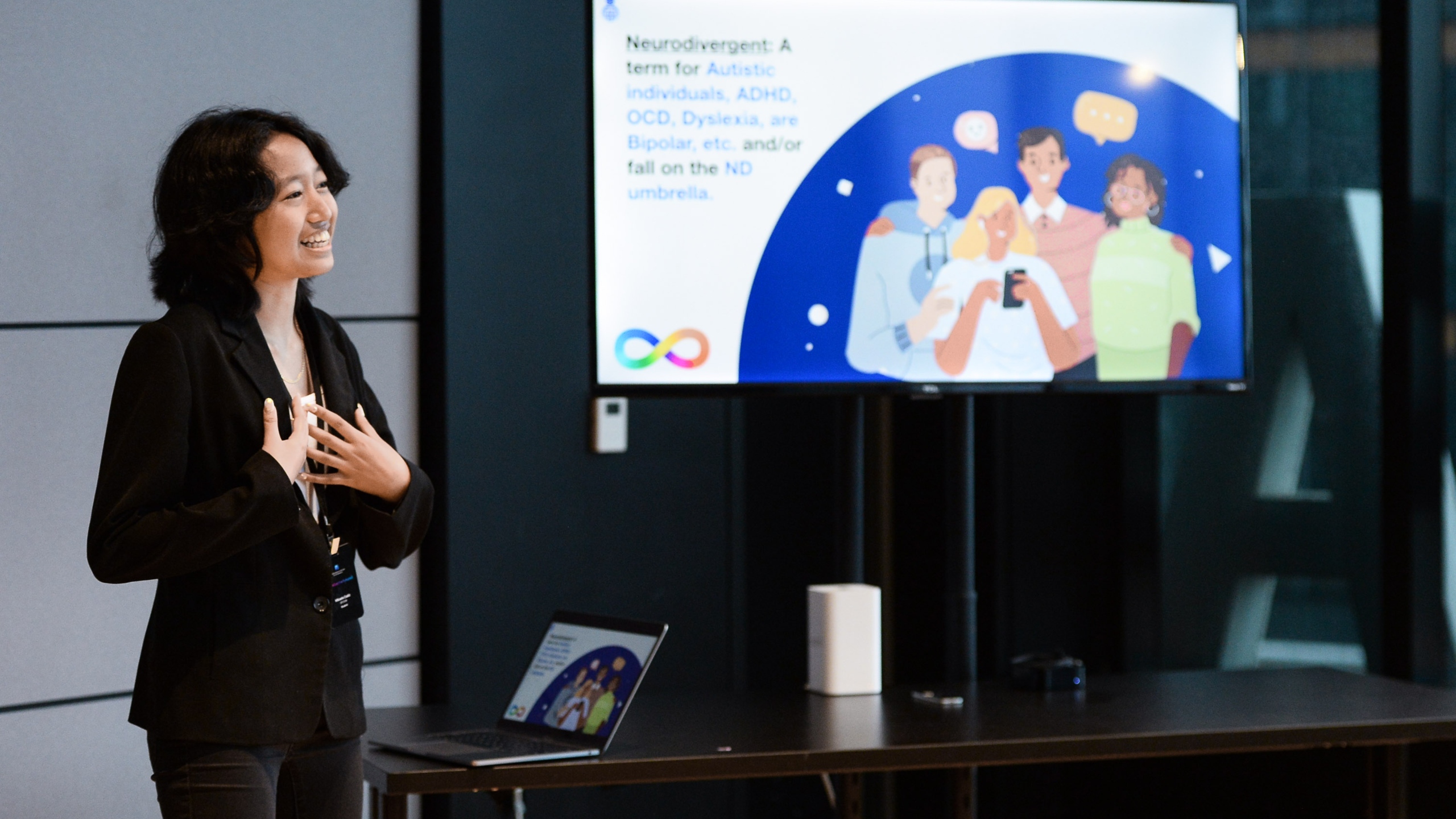Closing out a semester of work, students enrolled in a credited co-op program were tasked with prototyping an app using Apple’s Swift. More than 70 Ontario high school students were then given the chance to pitch their projects in front of leading developers from Ontario.
Dubbed the ‘App Development with Swift Co-Op’ event, students from seven districts, including the Peel District School Board, York Region District School Board, and Hamilton Wentworth District School Board, participated. The format is largely inspired by Dragon’s Den. Throughout the day, students presented their apps, walked the panellists through the UI, and gave an in-person demo in some cases.
This initiative directly addresses the provincial gap Specialist High Skills Major (SHSM) students face in finding placement opportunities. The program pairs students with industry and technical mentors, where they gain access to one-on-one learning. Students participating in the event develop their apps within Apple’s ecosystem, including Swift and Xcode. Much of this is in part due to how accessible the Swift documentation library is to aspiring coders.
This initiative first began in 2019 with a single school in Mississauga. Since then, this experience has expanded to help students engage in coding and computer science. Now, it’s expanded further and includes more than 26 schools across seven Ontario districts. Apple has also helped support the event through means of leveraging its developer documentation and app development platforms.
“During COVID, we had to offer the majority of our cooperative education experiences in a completely virtual environment,” Sarah Bereziuk, student success consultant at the Hamilton Wentworth Catholic District School Board, told MobileSyrup. “Although there was a collaborative piece to that as much as we could, it never could really be what it is now. My concern — how much of this is going to be purely virtual? How much is it going to be collaborative or in person? I think we arrived at the perfect solution.”
“It was very much sort of a hybrid, blended version of that where students had those opportunities to collaborate. [They] had the opportunities to speak with mentors, in person or virtual, sort of what worked on their timetable. I also think it’s very reflective of the world of work today. Not all experiences are going to be completely in-person all the time. It not only teaches them something that is so useful in terms of the technical side of it but in the very practical real world, what work might look like.”
Amongst the panellists were game developers from Snowman and WaterLlama. PokPok co-founder and CEO Melissa Cash also offered her insight as part of the panel. Additionally, the judging panel saw alumni students of this initiative take part. The panel not only offered constructive criticisms but encouraged students on ways their app stands out.
App Development with Swift co-op gives students a way to pursue their goals within app development. In Ontario, there is an opportunity gap between secondary education students and the real world. This initiative also encourages diversity across the board. It’s inspiring to see many participants were female, BIPOC, and part of the 2SLGBTQIA+ community.
Lexy Boahene presented her app, Tripcee. Utilizing hex code, Boahene’s vision sees people use an iPhone’s camera to scan a piece of street art and find the exact RGB colour code. Tripcee represents a wonderful asset artists could lean on when finding inspiration around their community. It also leverages already existing tech, filling a gap that doesn’t currently exist.
“I had a background [in coding]. I used to code from the fifth grade. I remember doing Minecraft Education, Dot and Dash, and robotics in elementary school,” Boahene said. “Then I took the 11 computer science courses. After that, when the second semester started, I was offered this co-op. That one grade 11 coding experience opened up so many more doors. So it just kept on with this opening more doors and more and more, and then I build on that experience.”
Martin Baldwin was another presenter. The 11th-grade coder brought forward Muvica, another app which utilizes a core aspect of an iPhone. Identifying that getting into music comes with a high cost, Muvica uses the iPhone’s sensors to create an instrument. Baldwin outlined two onboard instruments. The first was a rotophone, which has a compass-like UI controlled by the device’s orientation. The second was a shaker, which can be controlled by shaking the device, similar to the ‘Shake to Undo’ function. An in-person Muvica demo was done to the tune of Mary Had a Little Lamb.
“I didn’t expect to end up with such a cool product,” Baldwin said after his pitch. “It’s really awesome that I have it physically on my phone, and I can actually mess around with it. It’s just really cool. From starting with reading books, it was actually kind of boring, I’ll admit. Then going through the curriculum on Apple and learning the basics. Then you build your way up. So this is very cool, for sure.”
The future of Apple app development looks bright, as indicated by the students participating in this experience. There were many creatives exploring a variety of ideas. “What I love about this year’s version is the sort of hyper-focus on the entrepreneurial skills,” Bereziuk said. “I would love to see that remain at the forefront moving forward. It’s certainly something that our school board hopes to carve out at least for the next year or two, to make sure we can continue to provide it.”
It’s apparent how important opportunities like this are for students. Reflecting on the experience, my high school never prioritized coding or exploring computer sciences. Instead, building PowerPoint presentations was considered an advanced skill. It’s invigorating to see that the education system in Ontario has come a long way since those days.
Image credit: Sam Santos (Apple)
For all the latest Technology News Click Here
For the latest news and updates, follow us on Google News.

